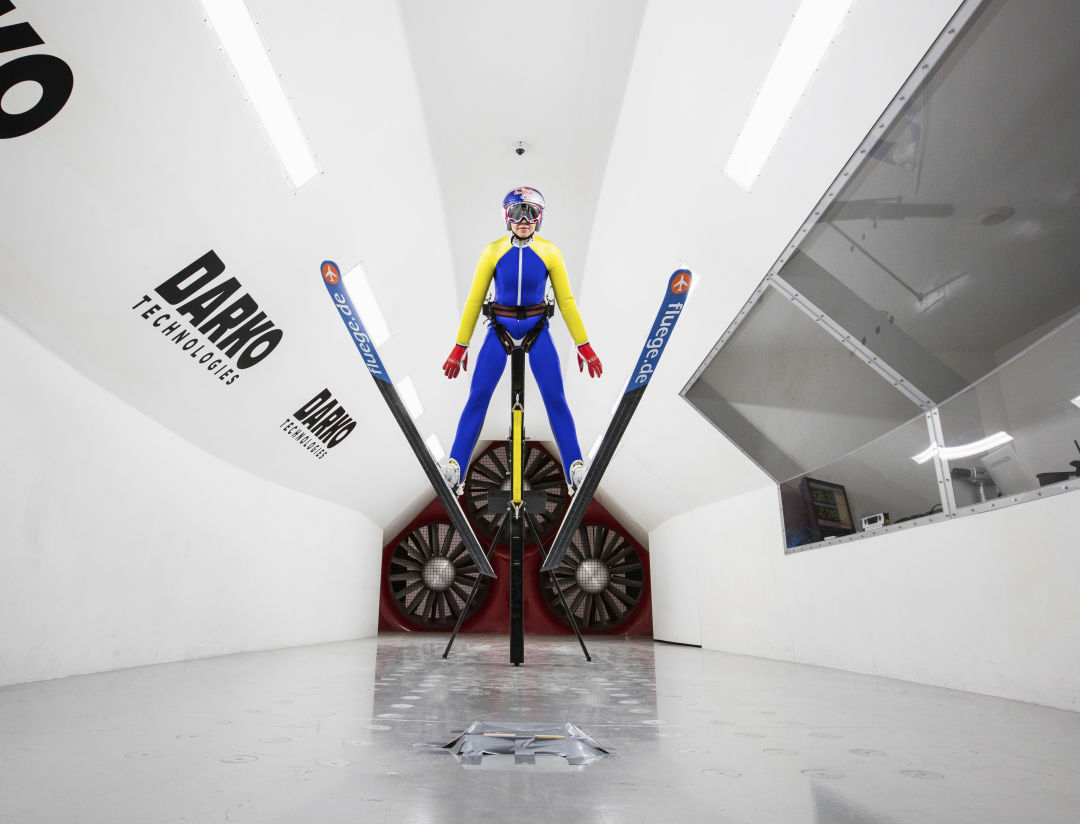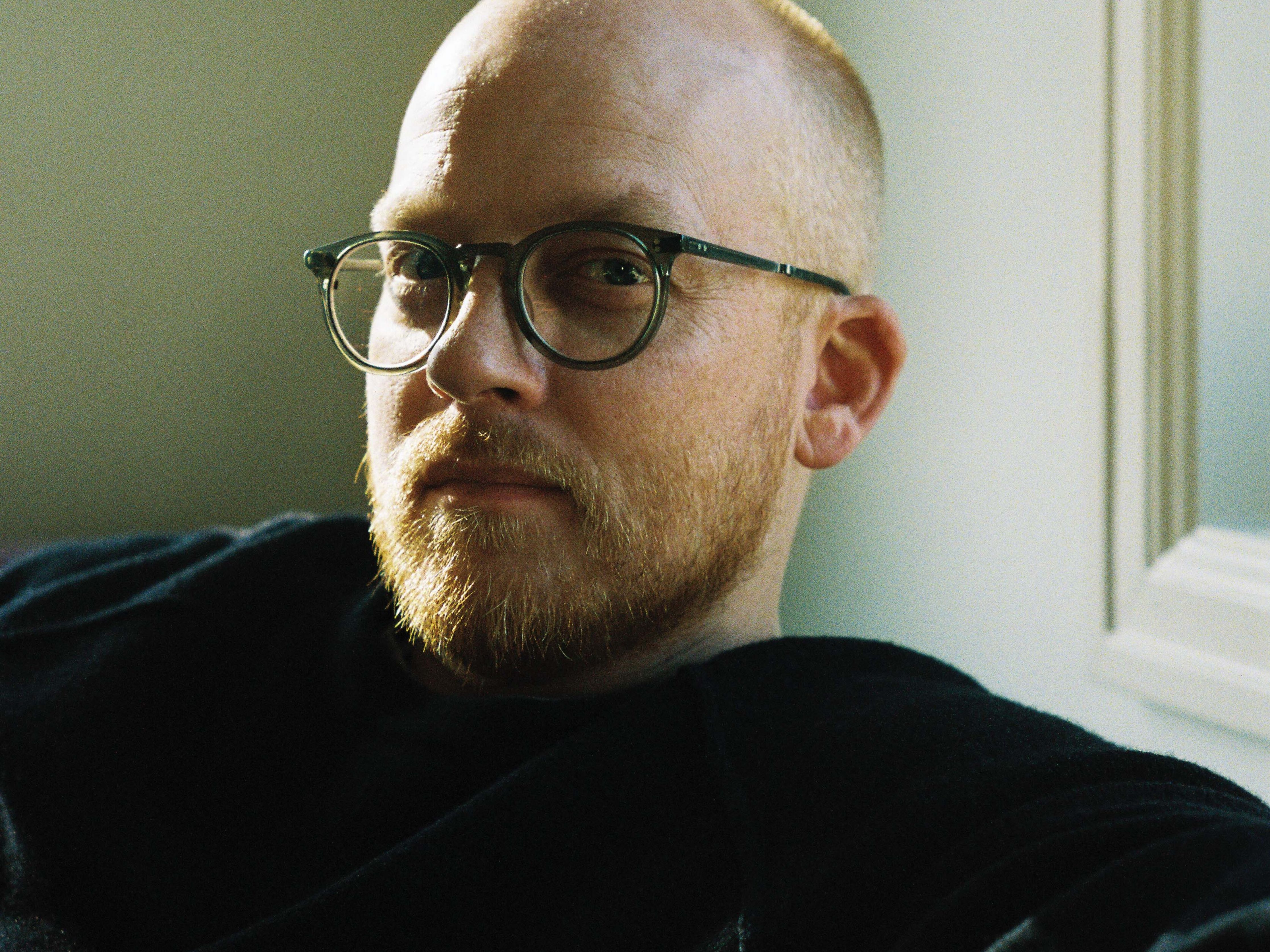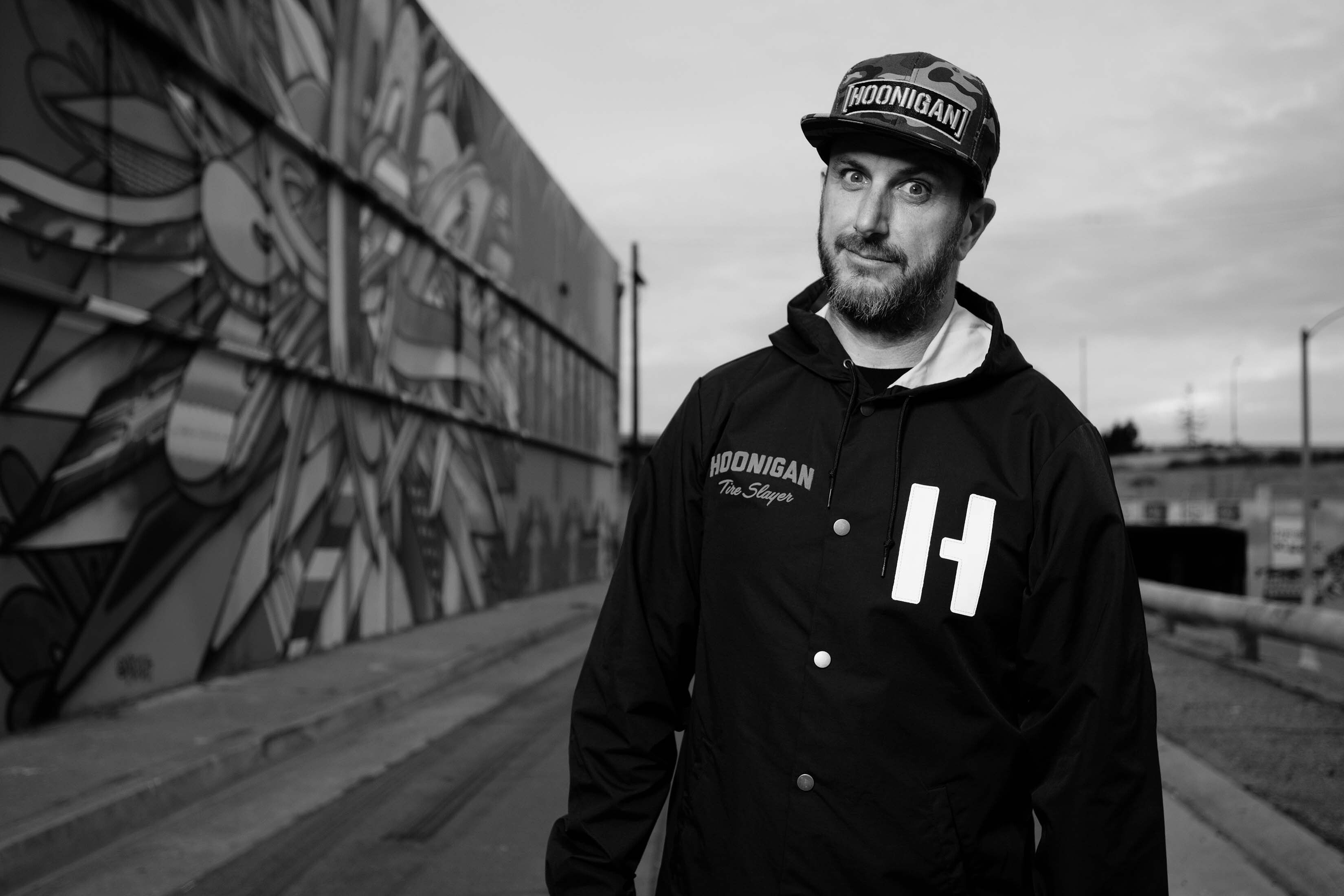Local Olympian Sarah Hendrickson Ready to Fly Again

Sarah Hendrickson, ramping up for her return at the Darko Technologies wind tunnel in Ogden, Utah.
Image: Red Bull
At JUST 22 YEARS OF AGE, ski jumper extraordinaire and Park City local Sarah Hendrickson has collected more than her fair share of medals. She made history with her gold medal finish at the first-ever women's ski jumping World Cup in Norway in 2013 and was the first female to ever jump in an Olympic ski jumping event during the 2014 Winter Games in Sochi. Her meteoric rise as one of the sport's most promising talents, however, has been hampered by knee injuries, including a serious ACL tear on her right knee, sustained during a training session in August 2015. The injury sidelined her from competition during the 2015-2016 winter season, forcing her to focus on rehabilitation.
After a 18-month stint of rehab, which included spending six days a week, five hours a day training at the US Ski Team’s Center of Excellence here in Park City, Hendrickson is finally flying again. Although she has yet to find herself at the top of a podium, she made an impressive return to the sport the first weekend in December during the FIS Ski Jumping World Cup in Lillehammer, Norway where she finished 11th after two jumps on Friday and eighth on Saturday in the rankings.
We caught up with a very level-headed and determined Hendrickson, ahead of a competition in Russia, to talk more about her career, the challenges she's overcome--particularly this past year--and how she's feeling about her return to flight.
Park City Magazine: First things first, how do you feel now that you have one competition under your belt? And how are you feeling about the upcoming event in Russia and how are you looking to improve on your results?
Sarah Hendrickson: I'm excited and very hungry for more, but I don't feel too much pressure. Right now, I just want to jump again and not overthink it. Last weekend I had some goals in my head for results, I mainly wanted to jump to see what I could do. This was my first telemark (how a jump is landed for extra style points) in 18 months, so I couldn't be too tough on myself, but it's definitely something I'm looking to improve on now. I ended up having one good and one medium jump, and so, this week, if I can get in two really good jumps, even if they don't put me on the podium but in the top ten, I'll be happy.
PCM: Ahead of the Sochi Olympics, you had a serious knee injury as well, one that almost prevented you from participating in the Games. When you injured yourself again, what was going through your head? Was there ever a moment when you thought you perhaps could no longer compete and how did you stay focused on recovery?
SH: Basically what injured my knee this time was the previous injury. I had a very unfortunate crash and because I rehabbed so quickly to participate in the Olympics, I jeopardized my knee and paid the price for it by having to go back and do rehab all over again. In my head I wasn't going to give up, but I still wanted to quit almost every single day. What kept me going was that I know I have more to give to the sport and haven't accomplished everything I want to yet. I just kept my dreams close and kept plugging along. It was definitely a long road, but it was the little part of me saying I want to win again and I believe I can win again that got me through it.
PCM: What's been the most difficult thing you've had to deal with through the recovery and getting back into jumping competitively again?
SH: It was definitely the mental side of things this time around. What's been most frustrating is that this fall, eight and then 10 months out of surgery, I was still having knee pain. When I got back to jumping in October I was having severe knee pain and even though I wasn't worried about anything being wrong, there was the nagging thought, 'I can't keep ski jumping if the pain is this bad.' Luckily it has adjusted and is much better. The mental side of that is just so challenging when you've put in so many hours and the one thing you can't control is how much time it takes to heal.
PCM: The world of professional athletes is pretty small and you're constantly competing against the same ladies. Are you all friends to some degree? Do you have a rivalry with anyone in particular?
SH: Something unique about women's ski jumping is the path we've gone down together fighting for equality and getting into the Olympics. We all really just want to expand the sport. So at the end of the day, if a girl jumps really far, it's good for all of us. I do have three really good friends from France, Austria, and Slovenia who I always hang out with while were traveling and I still talk to when we're all at home. It's really just an amazing community we're in and being a part of it every day was something I really missed while I was not competing.
PCM: You've obviously been ski jumping for a very long time--more than half your life--when did you realize or begin to think it was possible that you could make a career of it?
SH: I started in 2002 when I was 7 and the Olympics were in Park City. I'd been skiing since I was two and I followed in my brother's footsteps to get into ski jumping. I pretty much loved it from the start and the coaches realized quickly I had a natural talent for it. At the time I was doing it just for fun; I didn't really know there was a future in it because there really wasn't at the time. Then when I was twelve and starting traveling to Europe for competitions and won my first Continental Cup I realized it was something I wanted to do long term. Of course, the make or break was earning a spot in the Olympics. Athletes ultimately need that Olympic event to pursue their sport as anything more than a hobby, as far as sponsors and money go.
PCM: While men's ski jumping as been an Olympic sport since the very beginning, you were the first women to jump in the Olympics. Why do you think it took so long to recognize the sport and what are the next steps?
SH: Obviously it's pretty frustrating. But because it originated as a male sport, it's a bit self-explanatory as to why it stayed that way. Over the years some girls tried to get their foot in the door, but they were shut down over and over again. It wasn't until the late '90s or early 2000s that we finally had a group of pioneers who said it's not okay and we need to make a change. We are a 100 years behind in the sport so the growth we've seen in the last 10 years has been remarkable, especially the epic step of inclusion in the Olympics and having a World Cup circuit. We are still working toward two events in the Olympics and more World Cup events because we still have only half the number the men do. Mostly we need more numbers of girls getting into the sport and we're getting there, but it takes time.(Note: In the Olympics,women are currently allowed to jump from the short, or K90 hill, only whereas the men have always had two Olympic jumping events, on both the K90 and the K120, or large, hill.)
PCM: Females are slightly more prone to knee injuries in ski jumping than men, do you feel like you face any other challenges in the sport as a female athlete?
SH: There is sometimes an issue of knee injuries and our ACLs being at risk, but since ski jumping is such a technical sport, being female is advantageous overall. We are lighter and have less mass, so we can fly as far or farther than the guys. We do need a little extra speed, but from the spectator point-of-view, the women are jumping just as far as men and I think that might actually scare the traditional side of the sport. I don't want to take anything away from the men. I have a great relationship with many of them from different countries. We just want the same opportunities.
PCM: We know your plan is to compete at the World Championships in Finland in February and return to the Olympic stage during the 2018 Olympic Winter Games in PyeongChang, South Korea. Are you mainly focused on that or are you taking it one competition at a time?
SH: I honestly haven't formulated any solid goals for the season, I wanted to get through these four before Christmas and then reassess from there. Of course, I'd love to have top six at the World Championships. This season is a building one for Korea and I'm definitely hoping to compete, but there's a lot of work to do and qualifying. I do think about it, but I have to stay focused on this. With this injury, there was a possibility of not coming back to the sport, so now I think more in terms of one step at a time and one more day I get to ski jump again.
Hendrickson competes this weekend (Dec. 9-10) in the World Cup ski jumping event in Nizhny Tagil, Russia before returning to Park City on Dec. 19th for a brief holiday break. While she's in town, you can catch her and athletes of all levels, jumping at the Utah Olympic Park (UOP) where they regularly train. In January Hendrickson returns to Europe for another round of competitions, including the World Championships in Finland. We're excited to see her progress this season and we'll be keeping a close eye on how she's doing.
While Hendrickson is off conquering the skies across the world this winter, locals can still come out to support the sport and future Olympians right here in Park City when the UOP hosts 2017 FIS Nordic Junior World Championships and FIS World U23 World Cross Country Championships Jan. 30 - Feb. 5, the largest sporting event to come to town since the 2002 Olympics.




































